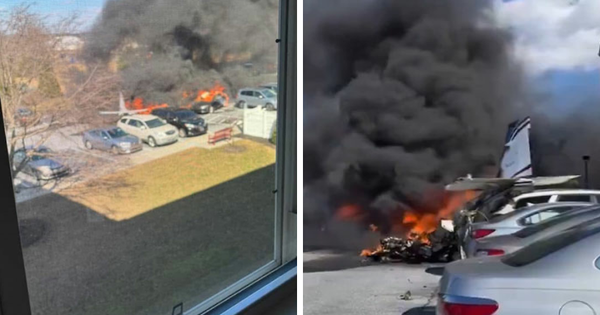
The urban art landscape in Thailand was marred earlier this month when a popular contemporary installation of a white buffalo called Kwai Calm was broken by a drunk British tourist who attempted to climb atop the sculpture, which stands in front of Samyan Mitrtown.
The incident was reported by Prof Apinan Poshyananda, chief executive and artistic director of the Bangkok Art Biennale, on his personal Facebook page.
A work by independent artist Maitree Siriboon, Kwai Calm was on display temporarily at The Peninsula Bangkok late last year before being moved to Samyan Mitrtown, an official exhibit venue for the 2022 Bangkok Art Biennale running until February.
The drunk tourist was reported to have climbed over the buffalo statue but fell to the ground on his first attempt. He succeeded on his second try, unfortunately leaving the sculpture broken into pieces.
According to Prof Apinan, the British tourist and his friends were taken to a police station. However, they refused to apologise or pay any compensation.
The remains of the buffalo installation were left at the exhibit site for a few days after the incident so that people could bid farewell to an artwork loved and appreciated by local and international passers-by.
However, Kwai Calm cannot rest in peace. The collapse of the buffalo -- an animal which, according to the artist, symbolises the strong bond between humans and mammals -- has raised an issue regarding the safety of art pieces on public display in big cities.
In this particular case, security fences were installed around the Kwai Calm exhibit. But when it comes to unforeseen circumstances, it seems nothing could stop an intoxicated man from being rude and reckless.
The destruction of art has increasingly been in the news during past years, especially the "eco-vandalism" approach taken by climate change activists who target and attack art to raise awareness about the climate crisis.
Although the Kwai Calm incident and climate art vandalism are different in terms of intensity and purpose (the latter is to mobilise and spread a climate change message, while the drunk tourist was just having what he supposed was a bit of fun), they do have something in common -- an artist's creativity was not just physically destroyed, but also disrespected.
Bangkok and other big cities across Thailand are being recognised and promoted as a hub for contemporary art. Take Chiang Mai, for instance. The street art scene in the northern province is emerging as one of the best in Southeast Asia, while contemporary art galleries have increasingly become a must-visit destination among travellers. Meanwhile, the southern province of Songkhla has also been renowned for street art in Songkhla Old Town. This is not to mention the capital city where art galleries -- big or small -- are mushrooming.
But inside this art-mad country, artworks are still underappreciated. Public exhibits are still at risk of being destroyed despite being fenced off or having adequate signage. Artistic creativity is still being underestimated and devalued.
In 2019, an award-winning wheel-shaped fiberglass art installation was broken into pieces at an exhibition when a child passed by and misunderstood the work as something to have fun with. The mother apologised and said the child thought the installation was a car wheel so he played with it, and that he was so naughty his dad could not catch him in time.
When the mother was asked by an exhibition organiser to pay compensation, she said her child is still young so she would only pay half of the proposed amount.
The exhibition organiser refused to tell how the argument ended up. But one thing for sure is the wheel-shaped artwork created by a budding artist was devalued only because of parental carelessness and negligence.
Artistic creativity regardless of genre is priceless. So appropriate measures should be put in place to ensure it is safeguarded. Local and international artists would therefore be delighted to push Thailand towards becoming a contemporary art hub because they can rest assured that their works will be treasured and protected.
With the sad incident of the broken Kwai Calm and the wheel-shaped sculpture, it is perhaps time to start a discussion as to how best to implement art protection measures, including what kind of budget and support is required to make art safe, who should be responsible for implementation, and so forth.
Don't let Kwai Calm die in vain.
Arusa Pisuthipan is the editor of the Life section of the Bangkok Post.







